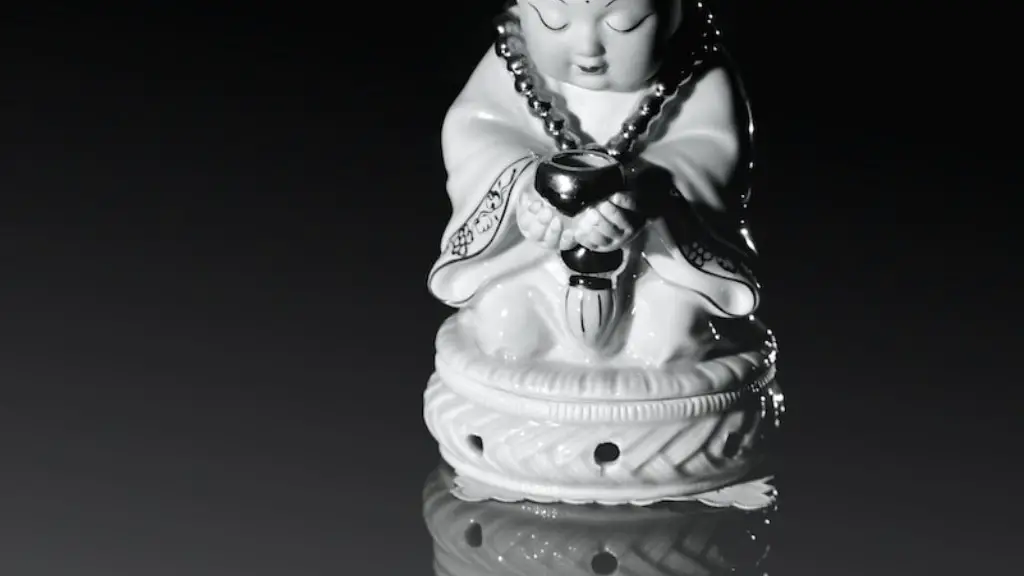What Are The Similarities Between Hinduism And Buddhism
Hinduism and Buddhism have followed distinct paths, yet they share many similarities. The two religions have evolved separately yet share many of the same gods, beliefs, and practices. Both religions have ancient roots, though Hinduism is the older of the two, having emerged in the Indian subcontinent around 3,500 years ago. Buddhism was founded by Siddhartha Gautama in the sixth century BCE, soon after which it spread to Southeast Asia and beyond. While Hinduism is identified as a Polytheistic religion, Buddhism is identified as an Atheistic religion.
One of the most obvious similarities between Hinduism and Buddhism is the belief in the cycle of life and death, known as samsara. Though there are slight variations in interpretation, both religious traditions uphold the idea that life and death are not final, but part of a larger cycle of death and rebirth from which one can eventually be liberated or attain perfect enlightenment. In Hinduism, this goal is known as moksha, while in Buddhism it is known as nirvana.
Both religion also share similar spiritual practices. Among the most well-known is meditation, which is a central spiritual practice in both traditions. Meditation helps practitioners to access inner peace, devoid of the chaotic and unnecessary thoughts that usually cloud judgement and confront them with said issue. In Hinduism and Buddhism, meditation involves focusing on a mantra, mantra repetition or image of a deity. It is believed that these practices provide deep insight into reality and can eventually lead to liberation from suffering.
Another similarity between Hinduism and Buddhism is the concept of karma, which is the belief that all actions have an effect. This law of cause and effect applies not just in one’s current life, but can also extend to future lives. That is, one’s actions in this life have the potential to determine their spiritual progress in future lives. According to both religions, this is the key to understanding why one’s fate can differ so dramatically in life, even when two people have come from similar backgrounds.
One of the most distinguishing features of Hinduism and Buddhism is the practice of renunciation. This involves forsaking worldly desires and possessions in order to attain enlightenment or liberation. In Hinduism, this is done through spiritual asceticism and devotion to god. In Buddhism, this is done through following the teachings of the Buddha and refraining from indulging in desires. Both traditions emphasize that clinging to attachment ultimately leads to suffering and thus renunciation is the only path to finding peace.
Both Hinduism and Buddhism also share the use of festivals and rituals to honor the gods and celebrate important religious events. For example, in Hinduism, festivals such as Diwali, Durga Puja, and Holi are celebrated throughout India, while in Buddhism, festivals such as Wesak, Magha Puja, and Asalha Puja are celebrated mostly in Southeast Asia.
Finally, another similarity between the two religions is the importance placed on service to humanity. Both religions emphasize the importance of helping those in need and taking care of the environment. Hinduism in particular places an emphasis on service to the gods, while Buddhism encourages service to those who need it most, regardless of religious belief.
Hinduism and Buddhism Caste Systems
Perhaps the most prominent similarity between Hinduism and Buddhism is the presence of a caste system in both denominations. Although the details of the two systems are slightly different, they both rely on the concept of ensuring that everyone has a place in society and that social hierarchy should be respected.
In Hinduism, the caste system is known as varnashramadharam, with each caste having various duties. Members of each caste are expected to carry out their duties diligently in order to maintain balance in society. In Buddhism, the caste system is less rigidly defined, but has similar levels with notably different names such as Bhikkhu (monks), Upasaka (lay disciples), Upadhyaya (teachers), and Mahanayaka (chiefs).
Such similarity between the caste systems of Hinduism and Buddhism is particularly evident in India and Sri Lanka, where, even in modern times, the concepts of dharma and karma are paramount in the majority of people’s lives. The caste system is not just a way of determining someone’s position in society, it is a way of determining their purpose and of measuring rewards and punishments in this life and in the afterlife.
The caste system in Hinduism and Buddhism is an intricate web of social obligations, religious practices and spiritual understandings, which even today has an influence in subtle ways in the lives of many Asians. Although there is much criticism surrounding the persistence of this system today, it is still an important element in both Hinduism and Buddhism.
Vegetarianism in Hinduism and Buddhism
Another commonly shared trait of Hinduism and Buddhism is the practice of vegetarianism. In Hinduism, vegetarianism is not mandatory for lay worshippers, but is for priests and holy men. Its adherents have traditionally consumed fruits, vegetables, grains, dairy products, and other food items that are not derived from animal sources. Similarly, Buddhism is largely centered around the concept of non-violence, thus followers of this religion generally choose to abstain from consuming meat and fish.
Vegetarianism in Hinduism and Buddhism serves several important purposes. Firstly, it is a way of expressing respect for all life. Many Hindus and Buddhists believe that eating meat is a violation of their religious values, and thus many prefer to consume plant-based foods. Additionally, vegetarianism is often seen as a way of improving one’s mental and emotional state, as adherents believe that consuming animal products can lead to feelings of guilt and guilt is seen as a hindrance to spiritual advancement.
Finally, vegetarianism can also help to reduce one’s ecological footprint. As vegetarianism eliminates the need to consume animal-based products, one can significantly decrease the amount of resources needed to obtain food. Studies have shown dramatically reduced carbon dioxide emissions, water usage, and land use by reducing or eliminating the use of animal-based products.
Thus, vegetarianism is something that is encouraged by both Hinduism and Buddhism, though it is not mandatory. This dietary choice can help to promote respect for all life, improve one’s mental and emotional states, and reduce one’s environmental impact.
Hinduism and Buddhism Spiritual Path
Another similarity between Hinduism and Buddhism is the concept of the spiritual path. This is the understanding that each person must find their own path to discovering spiritual truths. Though Hinduism and Buddhism have different religious systems, both contain teachings that can help adherents to begin their journeys towards spiritual understanding.
In Hinduism, the path of spiritual growth is known as yoga, which involves using various practices and techniques to draw the practitioner closer to the divine. This can include meditation, mantra chanting, physical practices such as asana and pranayama, and the study of ancient texts such as the Bhagavad Gita and Upanishads. In Buddhism, the path of spiritual growth is known as the Eightfold Path and focuses on ethical and mental discipline rather than physical exercise. It includes Right Understanding, Right Intent, Right Speech, Right Action, Right Livelihood, Right Effort, Right Mindfulness, and Right Concentration.
Both Hinduism and Buddhism emphasize the importance of a spiritual path, as they believe that it is the best way to achieve enlightenment or liberation. Both religions believe that following the spiritual path involves a lot of dedication and hard work, but ultimately the rewards are worth it. While the paths may differ, the core values and beliefs about spirituality and the divine are essentially the same for both Hinduism and Buddhism.
Hinduism and Buddhism Deities
Another similarity between Hinduism and Buddhism is their shared use of deities. Hinduism has a vast pantheon of gods and goddesses, with each deity representing a particular aspect of the divine. Similarly, Buddhism also has numerous deities that serve as guides on the path to enlightenment. These deities are usually depicted sitting in various postures, representing different teachings and spiritual principles.
Though some Buddhist deities are derived from Hinduism, there are many that are unique to Buddhism. These deities are known as bodhisattvas and they serve as symbols of wisdom and compassion. Some of the most popular bodhisattvas are Manjushri, Avalokiteshvara, and Samantabhadra. The purpose of these deities is to serve as examples of how to live a moral and virtuous life.
Moreover, both Hinduism and Buddhism have their own unique creation myths. In Hinduism the creation story is known as the Purusha Sukta, which tells of the divine self-creation of the cosmic man, Purusha. In Buddhism, the creation story is known as the ‘Wheel of Becoming’. This story is about the three aspects of the universe, namely form, suffering and craving, and how they arose from conditions within the six realms of existence.
In summary, Hinduism and Buddhism share many similarities, ranging from the caste system and vegetarianism to deities and the belief in a spiritual path. Though the religions are vastly different in many ways, their shared values and practices shed some light on their common origins.


